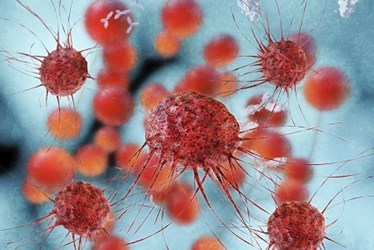4 Takeaways From Cell & Gene Therapy World

By Ed Hess, Editor, BioProcess Online

Cell and gene therapies hold great promise for patients. Now, the pressure is on the industry to develop processes and solutions that deliver these products economically.
Producing a successful conference requires its planners to answer an endless series of questions. Do you have the right location? Did you pick the right time of year? What does the speaker lineup look like? Are the right topics being covered? Who is the keynote speaker? It goes on-and-on.
Then you get a question you couldn’t have anticipated: What happens if the conference location gets pounded with a historic snowstorm? The answer provided by the folks at Cell & Gene Therapy World 2016 was, literally, “The show must go on.” This past week in Washington DC, about 450 of the conference’s 700 registered delegates overcame truly adverse travel conditions to attend the three-day event. And, it was worth it.
The session topics aligned with some of the biggest challenges facing the commercial success of cell and gene therapies. After a couple of days of spirited discussions, some key takeaways emerged from Cell & Gene Therapy World. Here are a handful of the most critical.
1. Commercial Success Requires Manufacturing Breakthroughs
The long-term commercial success of cell and gene therapies will be a triumph of manufacturing. After decades of research and testing, the science behind these therapies is understood and believed. Successes in clinical tests have proliferated. However, the manufacturing process has not kept pace. As remarkable as these therapies may be, widespread success will be based on consistent reproduction at a reasonable cost. Neither of which is a reality today. The industry needs to develop more flexible and automated solutions (and processes) to drive costs down and throughput up. Adoption of therapies that routinely cost over $100,000 per treatment is not feasible in any healthcare system, let alone sustainable.
2. Transportation & Handling Is Too Often An Afterthought
The responsibility for a therapy doesn’t end once it leaves the production facility. It ends when it reaches the patient. It’s tempting to do a group high-five when a therapy is successfully produced. But, have you really considered all the steps involved with getting that therapy to clinical sites and patients? Choosing the right shipping process (and provider) to safely transport the product complicated. Even if the product arrives unharmed, clinical sites vary greatly in their ability to properly handle and store these therapies without damaging them. All along the way, a proper chain of custody must be documented to ensure safety and, in some cases, assign culpability. Of course, all of this complexity comes with a cost and the requisite discussions of who pays for successful (and unsuccessful) transportation and storage.
3. Wall Street Is Excited
From an investment perspective, Wall Street is excited about the cell and gene therapy space. After watching and evaluating the space for years, investors are pretty enthused about the science and the data behind these therapies. “It’s never been more solid,” crowed one investment analyst at the conference. “We’re very optimistic about this space.” Optimism aside, many more companies in this space will fail than succeed. That’s just a business reality. Which companies will succeed? Who knows. But, analysts are asking these questions in order to get a better read. How impressive is your management team? What type of intellectual property have your created? How does your science standout compared to competitors? What’s your company’s relationship with other pharma companies?
4. The Concerns Of Cost And Scale
It’s not entirely clear that the cell and gene therapy industry can reach the commercialized success it dreams of. It’s possible that widespread commercial success will always loom on the horizon, within sight yet never within reach. Brian Hampson, VP, manufacturing, development, and engineering at PCT, outlined exactly what this type of success would look like in four words.
- Quality (high-quality, highly effective therapies)
- COGS (reasonable cost of goods sold)
- Scale (able to meet the demands of the market)
- Sustainability (products follow a predictable lifecycle)
The science behind these therapies is truly inspiring and the clinical tests are very promising. But, that still leaves plenty of challenges in transforming this great science into a great business. Technology equipment providers are working tirelessly to reduce costs through automation and scale. Everyone is optimistic that commercial success of these therapies is achievable. That’s a real possibility. But, it’s not an inevitability.
